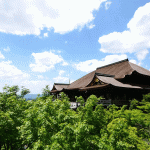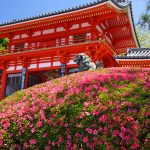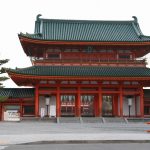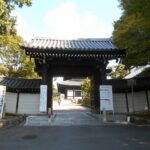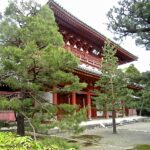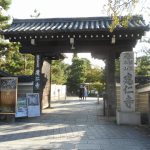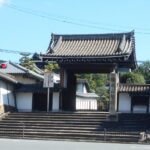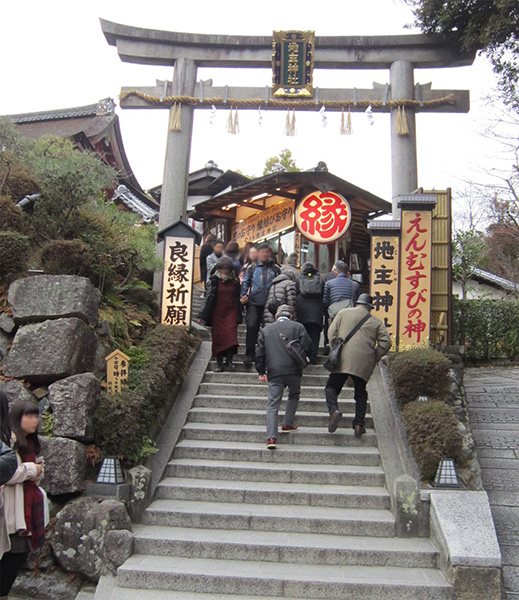
ページの目次
- Jishu Shrine,inside Kiyumizu-dera(地主神社)
- Location-Access
- Who was this shrine built?
- What is this shrine famous for or merit?
- What is highlight?
- Sub shrine: Haraedo-no-Ohakami 祓戸大神
- Sub shrine: Okage-Myoujin おかげ明神
- Sub shrine: Mizukake-Jizo-Bosatsu 水かけ地蔵さま
- Sub shrine: Ohtano-Ohlami and Daikoku-sama 大田大神と撫で大国さま
- Sub shrine: Happy Drum 幸福祈願所
- The Special Goen prayer at Kigan-den 祈願殿と縁結び特別祈願
- Sub shrine: Kiyome Dokoro 清め所
- Sub shrine: Ryoen Daikoku-sama 良縁大国さま
- Sub shrine: Karimitsu Inari 栗光稲荷さま
Jishu Shrine,inside Kiyumizu-dera(地主神社)
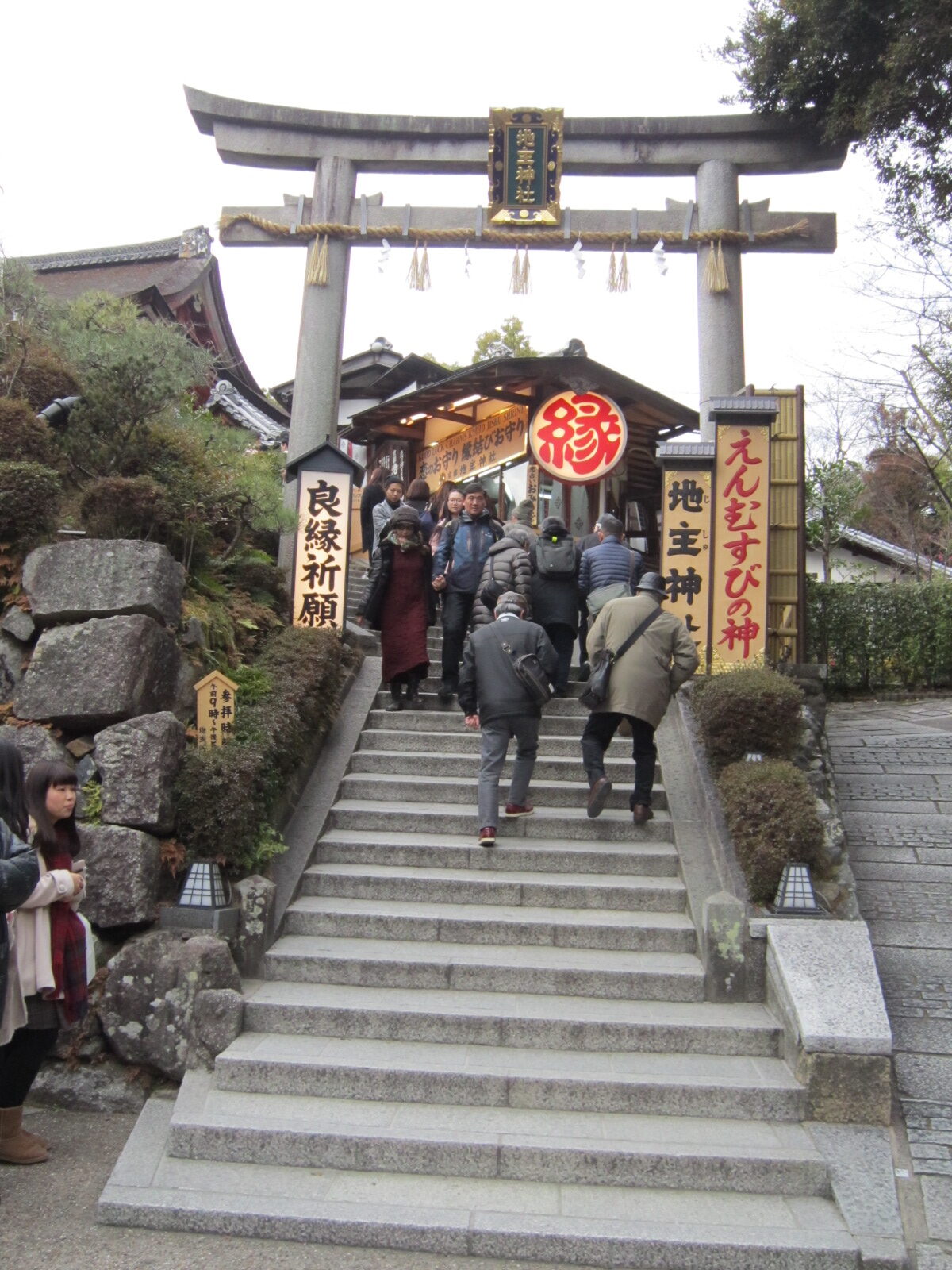
Location-Access
It is located inside Kiyomizu-dera temple on the hillside of Mt. Kiyomizu or Mt. Otowa in Higashiyama Mountain Area of Kyoto.
It takes 20 minutes from Kyoto station to Gozyou-zaka or Kiyomizu-miti bus stop by Kyoto city bus#206, 209 ,100 ,and 10-minute walk.
(この神社は東山エリアの清水山又は音羽山の山腹で清水寺境内に位置する。
市バス系統206, 209, 100で京都駅から五条坂/清水道(20分)まで、下車後10分徒歩要する。)
Who was this shrine built?
This shrine was founded away back in the time immemorial. It is said that the stone of love fortune-telling which is place in front of the main hall have been there from the Joumon period.
(創建年代は遠く太古に遡る。本殿前の「恋占い石」は縄文時代から伝わると言われている。)
This shrine is said to be in 8th century as same as Kiyomizu-dera Temple and enshrine “Ohkuninushi-no-mikoto” as Shinto to merit the getting of love and matching.
Shinto is Japans native religion to worship nature gods and human gods.
(この寺は清水寺と同じ8世紀に建てられて、恋の成就や縁結びのご利益のある大国主命を祀っている。神道は自然の神と人間の神を祀った日本古来の宗教である。)
In 811, the cherry trees, in this temple called “Jishu-zakura”, are well-known for their beautiful blossoms. And they are also known as “Mikuruma-gaeshi-no Sakura” as the beauty caused the Emperor Saga to have his carriage turned around three times to view the flowers when he visited in 811.
(場内は、「地主桜」と呼ばれる桜の名所である。
811年、嵯峨天皇が訪れた時、地主桜の美しさに三度御車を返したことから、「御車返しの桜」で有名である。)
The current shrine pavilions were established by 3rd Shogun Iemitsu Tokugawa in 1633.
The main hall is one of the most famous double chapel established in Nara period showing the oldest architectural style. The main hall, worship hall and main gate are registered as Important cultural properties.
(現在の社殿は、1633年三代将軍徳川家光によって再建された。本殿は奈良時代の双堂という建築様式を残す。また、本殿、拝殿、総門は国の重要文化財に指定されている。)
What is this shrine famous for or merit?
God of love fortune telling. 恋の成就と良縁
This shrine is famous for a grace of realization of love and good match where lots of people visit in Japan.
(地主神社は、恋の成就や良縁達成のご利益がある神社で多くの人が訪れる。)
Stone of love fortune 恋の占い石
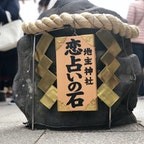
In the shrine, there are two stones which has a distance approx. 10 way between them. There stones are called the stone of love fortune telling.
(境内には、10m程離れた2つの石があり、「恋占い石」と呼ばれている。)
It is said that you will realize your love if you could get to another stone from one stone by walking with your eyes closed.
(2つの石の間で目を閉じて片方の石に辿り着けば恋が叶うとされている。)
What is highlight?
Sub shrine: Haraedo-no-Ohakami 祓戸大神
In front of the main hall, you found a small statue of Haraedo-no-Ohkami. He is a Deity who gets rid of anything evil. Prior to Shinto ritual, priest usually read out “Harae-Kotoba”. Hare-Kotoba is a kind of poem to get evil things away and purify priest and participant of ritual. We find in the poem.
(本堂の前で祓戸大神の小さな像があり、悪を取り除く神がある。神道の儀式に先立って、
通常、“祓いの言葉”を読み上げる。祓いの言葉は邪悪の物を取除く、清僧、儀式の参道のような詩である。像はクリスタルの球体である。我々が球体に触って占い師が悪を取除く。)
The statue has a crystal globe. We touch it and he removes evilness of paper of Hatogata
(人かたは、悪霊を追い払う一枚の紙に人間の形をしている。)
Sub shrine: Okage-Myoujin おかげ明神
The Deity enshrined there make our hope come true. Don’t tell her all of your hopes. She can handle only one of them. Behind the shrine, there is a cedar tree. We can do many on it. The tree would be used when people put someone under curse.
(神は望みが叶うように祈る。彼女にあなたの望みのすべてを伝えてはいけない。彼女
はその中で1つしかハンドリングできない。明神前に杉の木がある。)
Actually, Jishu shrine used to be a place for Ushinokoku Mairi. In Ushinokoku mairi, people visit shrine or temple to curse a person with a nail to the wood through
a figure made of hay. The figure plated a role of a person they wanted to be cursed.
(神は望みが叶うように祈る。彼女にあなたの望みのすべてを伝えてはいけない。彼女はその中で1つしかハンドリングできない。明神前に杉の木がある。
実際、地主神社は以前から丑の刻参りをする所であった。丑の刻参りとは、人が神社やお寺に祀って干し草の人形に釘で刺して人を呪うこと。その人形は呪われた人の役割を演じた。)
Sub shrine: Mizukake-Jizo-Bosatsu 水かけ地蔵さま
There is a stone statue of Mizukake Jizo. Jizo is a Buddhist Deity called Jizo Bosatsu who saves people in suffer. Mizukake Jizo was excavated at Jishu shrine because he had been on an austere and intense training for enlightment under the ground.
We put water on the staue with a dipper to ask his help.
(水かけ地蔵さまの石像がある。地蔵は人の苦しみを救う地蔵菩薩の仏教の神さまである。地下で厳しく激しい悟りの修行していた時、水かけ地蔵は掘られた。彼の救いを願うため、像に水をかける)
Sub shrine: Ohtano-Ohlami and Daikoku-sama 大田大神と撫で大国さま
To the right of Okage Myojin, there is a shrine enshrines Otano Ohkami and Daikoku-sama. Ohotano Ohkami gives us long and healthy life.
Daikoku-sama is Ohkuninushi no Mikoto.
He gives us lots of properity depending on a place we touch.
(おかげ明神の右側には、大田大神と大国さまを祀っている。大田明神は我々に長生きと
健康を授かる。大国さまは、あなたが触った所に多くの繁栄を授かる。)
・Hammer: Goen and good fortunes , ・Head: makes you smart, ・Belly: easy delivery,
・Barrel: Fortunes on family affair, ・Bag: Money, ・Hand: Triumph, ・Foot: Safety
Sub shrine: Happy Drum 幸福祈願所
Sound the drum with your hand softly. You hopes resonate.
(あなたの手で柔らかくドラムの音の出してください。あなたの望みは鳴り響く。)
The Special Goen prayer at Kigan-den 祈願殿と縁結び特別祈願
Kigan den is a hall where ritual is held. It is lacated face to face the main hall.
Priest prays for you there every day. The price depends on terms you want.
(祈願殿は、儀式が行われる場所で、本殿と接している。神は毎日あなたのために祷る。
御祓い銭はあなた次第である。)
Sub shrine: Kiyome Dokoro 清め所
Before we go to the main hall, we visit Kiyome Dokoro and purity ourselves.
(本殿に行く前に、清め所と自分自身を清める所に移る。)
Sub shrine: Ryoen Daikoku-sama 良縁大国さま
Next to Kiyome Dokoro, there is a statue of Ohkuninushi no Mikoto. There is a mobile over it. It has red and white pieces of papers. Female person writes her name on a white one and vice versa and ask him Goen.
(清め所の隣に、大国主命の像がある。携帯電話があり、赤と白の対の紙がある。女性は白い紙に自分の名前を書き、彼に良縁を頼む、男性逆である。)
Sub shrine: Karimitsu Inari 栗光稲荷さま
Kurimitsu Inari is lacated near Ryoen Daikoku-sama. It enshrines the same Deity Fushimi Inari Taisha does.
(栗光稲荷は良縁大国さまの隣に位置する。栗光稲荷は伏見大社の神と同じ神を祈る。)
